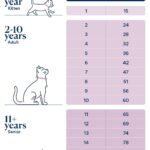There’s a common misconception that testicle size and penis size are correlated. While this isn’t entirely true, there’s a complex relationship between genital development, hormone levels, and fertility that warrants exploration. This article delves into the scientific research on testicle size, penis size, and their potential connection to male infertility.
Understanding the Science Behind Genital Development
Male genital development is heavily influenced by androgen exposure during fetal development and puberty. Androgens, such as testosterone, play a crucial role in determining the size and function of reproductive organs, including the testicles and penis. Disruptions in androgen exposure during critical developmental periods can lead to various reproductive anomalies.
One key indicator of androgen exposure is anogenital distance (AGD), the distance between the anus and the genitals. Studies have shown a strong correlation between AGD and penile length, suggesting a shared developmental pathway. Research also indicates a link between shorter AGD and lower fertility, sperm density, and testosterone levels.
Examining the Relationship Between Penis Size and Fertility
While the relationship between testicle size and fertility is well-established, the connection between penis size and fertility is less clear. Some studies have investigated whether stretched penile length (SPL) is associated with fertility. Research has found that men presenting with infertility complaints tend to have slightly shorter SPL than men with other urologic concerns. However, the difference in length is often small and within the normal range.
The Role of Testosterone
Testosterone levels also play a role in this complex equation. While adult testosterone levels don’t directly correlate with penis size, testosterone during puberty is essential for penile growth. Some research suggests a weak but positive correlation between adult testosterone levels and both penile length and AGD. This could indicate that men with higher testosterone levels during development may have larger penises and continue to have higher testosterone levels in adulthood. However, more research is needed to confirm this hypothesis.
Interpreting the Findings
It’s crucial to interpret these findings cautiously. While studies suggest an association between smaller genital size and infertility, this doesn’t imply causation. A slightly shorter penis or smaller testicles don’t necessarily indicate infertility. The average sizes in both fertile and infertile groups typically fall within the normal range.
Furthermore, this research doesn’t suggest that increasing testosterone levels will enhance penis size. In fact, exogenous testosterone can negatively impact fertility.
Further Research and Conclusion
The relationship between testicle size, penis size, and fertility is a complex area that requires further investigation. While current research suggests a potential link between genital development and reproductive potential, more studies are needed to understand the underlying mechanisms and confirm these findings. Future research should focus on longitudinal studies examining hormonal levels throughout a man’s lifespan and explore the interplay between genetic and environmental factors influencing genital development and fertility. It’s important to remember that these findings are preliminary and should not be used to make clinical diagnoses or treatment decisions.

